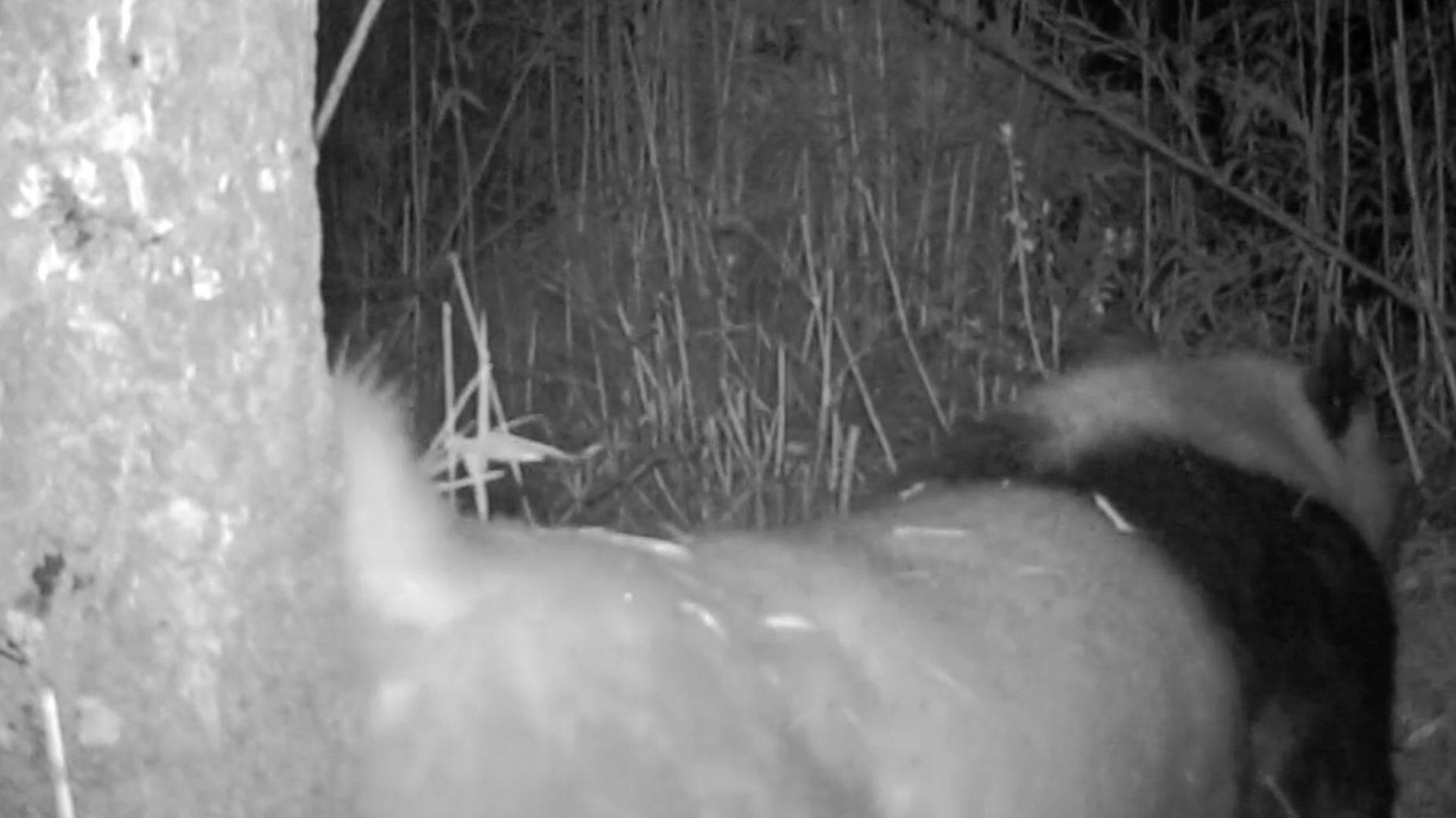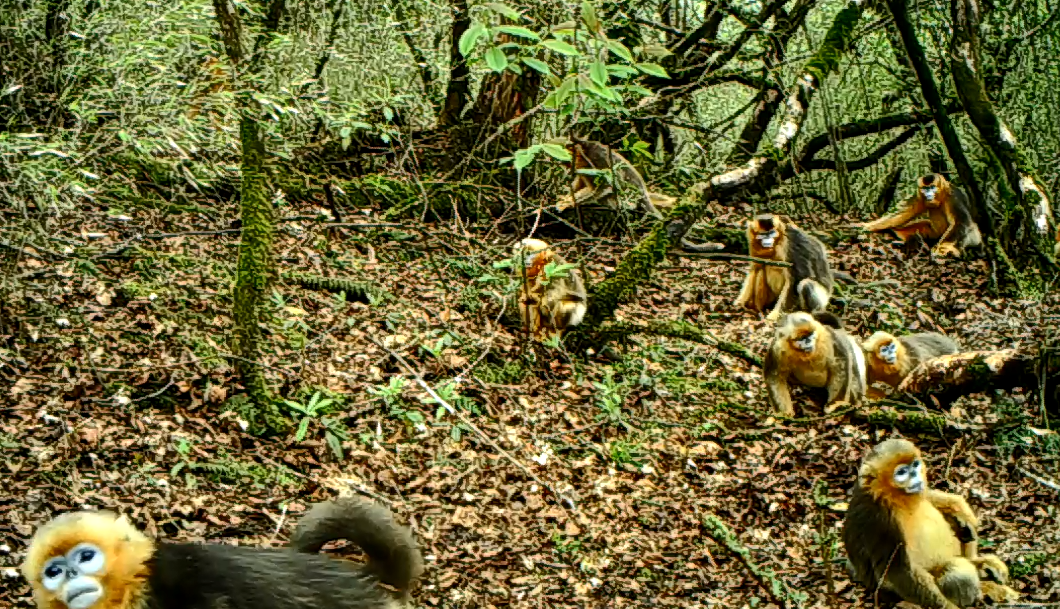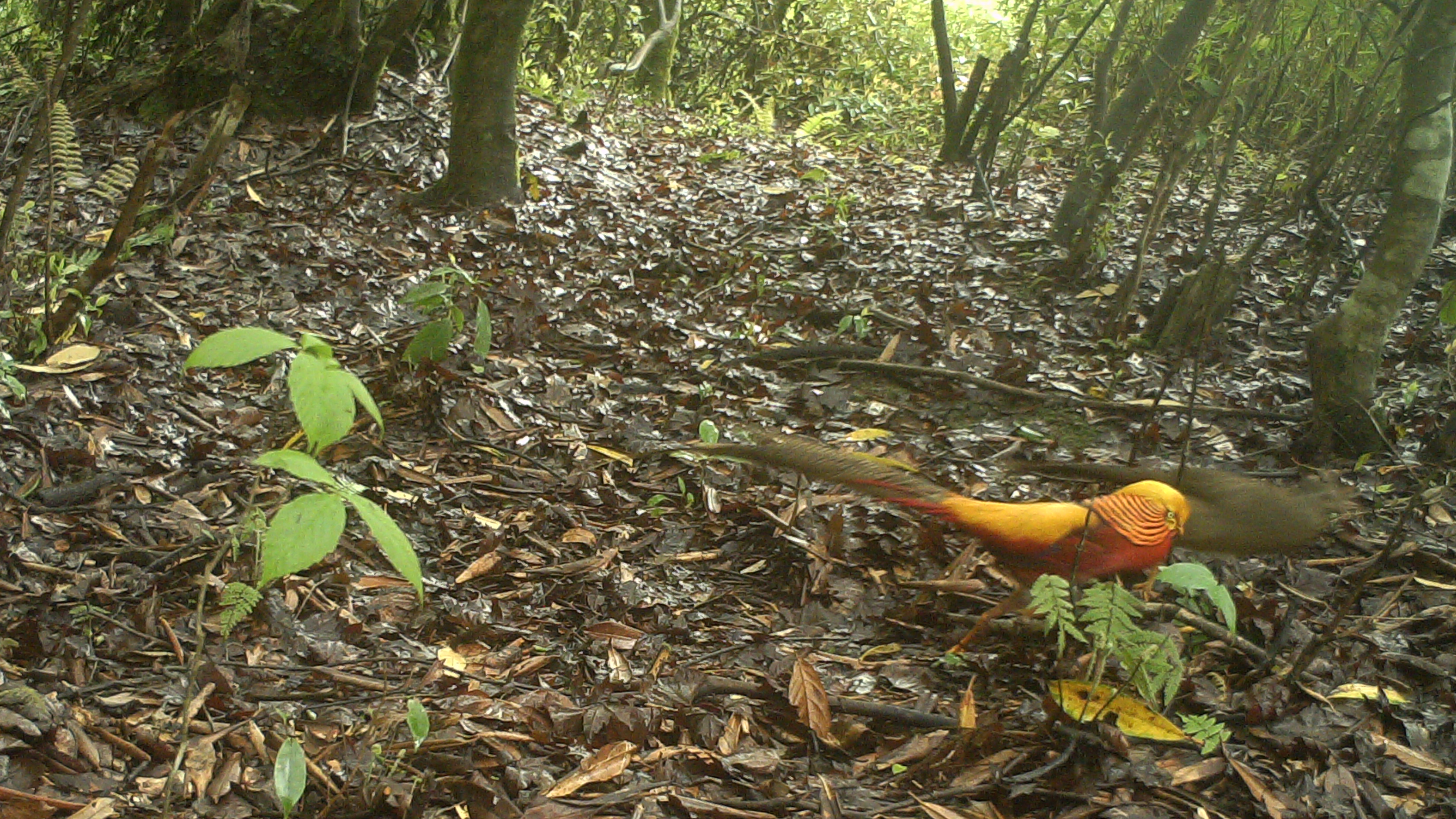An image of a panda rubbing its butt against a tree trunk was found when rangers in Deyang section of the Giant Panda National Park were collating infrared camera data recently in southwest China's Sichuan Province.
00:20

Rubbing against a tree trunk is actually a marking behavior demonstrating its territorial rights. Pandas smear secretions from their perianal glands on pillars, tree stumps, walls, the ground, and places they often pass through. In the off-season, they will walk away at the scent of a strange panda, while during the rutting season, a female panda's scent may signal that she is ready to mate and wants to attract males.
According to the Deyang Bureau of the Giant Panda National Park, it was the first time that panda's marking behavior has been filmed since 2017 when the pilot panda national park system was launched. A total of 233 infrared cameras have been installed in the Deyang section for monitoring of giant pandas and other animal species.

Golden snub-nosed monkeys are seen in the Deyang section of the Giant Panda National Park in southwest China's Sichuan Province. /Deyang Bureau of Giant Panda National Park
Golden snub-nosed monkeys are seen in the Deyang section of the Giant Panda National Park in southwest China's Sichuan Province. /Deyang Bureau of Giant Panda National Park
The Giant Panda National Park stretches through Sichuan, Shaanxi and Gansu provinces. The population of wild giant pandas in the cross-provincial national park is stable, with their habitats expanding and becoming more connected.
Deyang section covers an area of 595 square kilometers, including a core protection area of 490 square kilometers. The 4,000-meter gap between the highest elevation of 4,989 meters and the lowest of 986 meters entices a rich array of rare wild animals and plant resources.

A golden pheasant is seen in the park. /Deyang Bureau of Giant Panda National Park
A golden pheasant is seen in the park. /Deyang Bureau of Giant Panda National Park
In October, China officially designated the first group of national parks, including the Sanjiangyuan National Park, the Giant Panda National Park, the Northeast China Tiger and Leopard National Park, the Hainan Tropical Rainforest National Park, and the Wuyishan National Park, which are home to nearly 30 percent of the key terrestrial wildlife species found in the country.
(If you want to contribute and have specific expertise, please contact us at nature@cgtn.com.)

